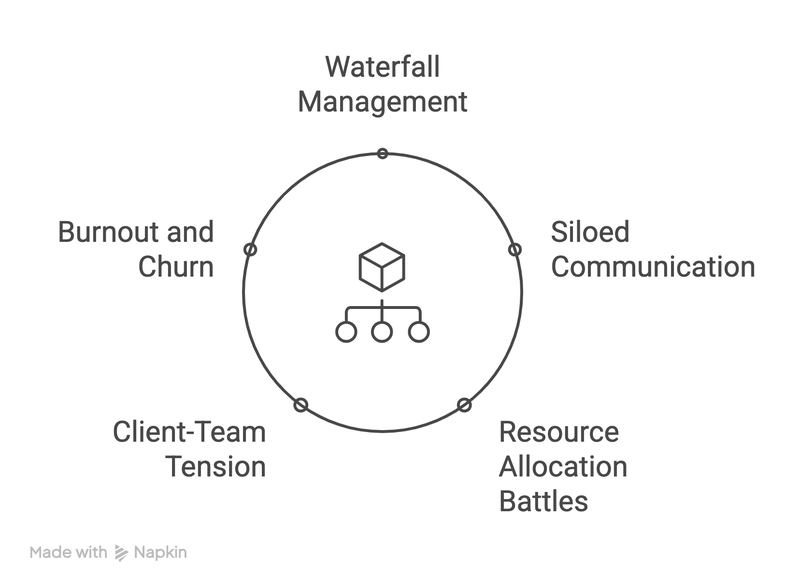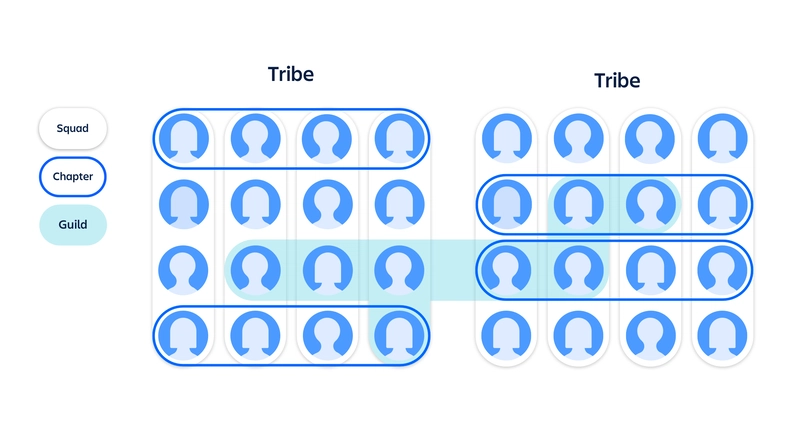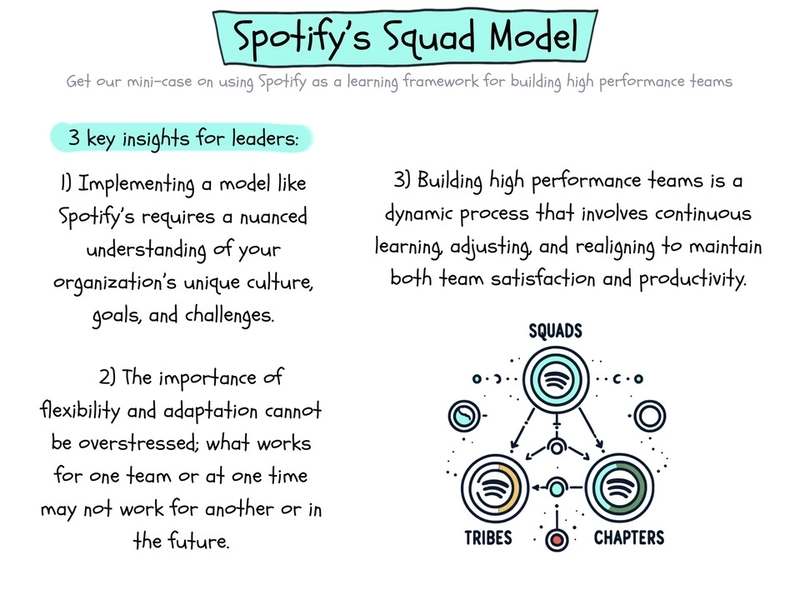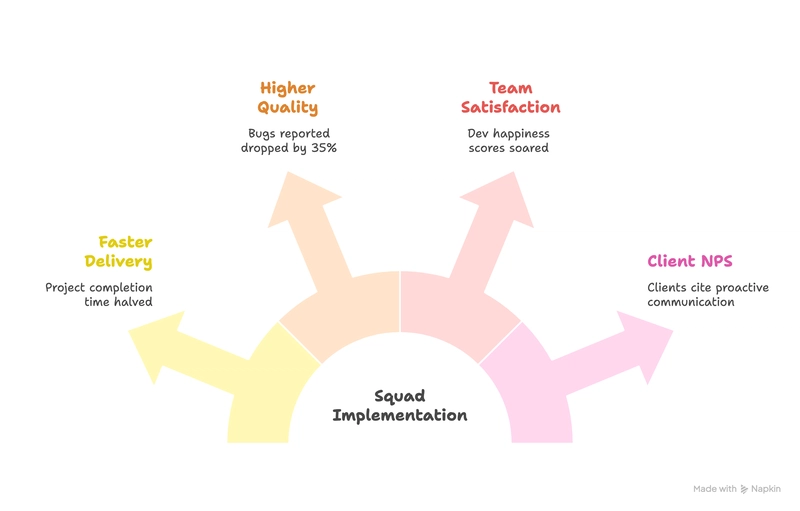How We Crushed Traditional Dev Teams: The Spotify Model That Boosted Our Velocity 89%
Introduction: The Development Agency Scaling Problem
Every dev agency dreams of scaling smoothly. But rapid growth isn’t just about landing new clients or hiring more devs; scaling pains often surface as project delays, burned-out teams, and annoyed clients.
Traditional project structures, with their confusing hierarchies and waterfall planning, can’t keep pace in today’s agile world.
We asked ourselves:
How could we deliver value faster, maintain code quality, and keep our developers happy? All while tackling complex, overlapping projects with shifting requirements?
The answer: Rethink everything. By adopting the Spotify Model and retooling our processes (with a massive assist from platforms like Teamcamp), we saw an 89% increase in velocity without sacrificing quality or sanity.
What Is the Spotify Model? (A Dev Agency Perspective)
Born at Spotify to solve scaling and innovation challenges, the Spotify Model isn’t just another agile buzzword.
Instead, its a flexible team topology optimized for autonomy, alignment, and rapid iteration, everything dev agencies crave.
Key components, reimagined for agency life:
- Squads: Small, cross-functional teams (think: frontend, backend, QA, DevOps) empowered to own a project or client.
- Tribes: Groups of squads working toward related goals, sharing learnings, and avoiding project silos.
- Chapters & Guilds: Communities of practice (e.g., all UX designers in one chapter) that foster skill growth, share best practices, and maintain technical consistency.
Why is it perfect for dev agencies? Breaking up the old waterfall and department-based bottlenecks empowers engineers and keeps everything tightly aligned with client needs and agency goals.
The Traditional Dev Agency Structure Problems

Anyone who has managed (or survived) a traditional dev agency knows these productivity killers:
- Waterfall project management: Rigid, linear processes that can’t adapt to changing requirements.
- Siloed communication: Developers, designers, and QA each in their world, slowing feedback and collaboration.
- Resource allocation battles: Who gets to work on what and when?
- Client vs. team tension: Clients want speed; devs need focus and autonomy.
- Burnout and churn: Repetitive firefighting leads to frustrated, departing talent.
Intent: These classic issues suffocate velocity and innovation—two things every modern dev agency must master.
If you want to calculate Team Burnout rate create chart in this Free burndown chart generator
Adapting Spotify’s Squad Model for Dev Agencies
1. Squad Formation Strategy
Our secret: Squads of 6–8 people comprised of every role a feature or project needs.
- Frontend and Backend Devs – integrated from day one.
- QA Engineers – catching bugs before clients do.
- UI/UX Designers – baked into the process, not bolted on.
- DevOps Specialists – automating, deploying, and supporting agile delivery.
We experimented with client-focused squads (dedicated to major clients) and tech-focused squads (expertise in platforms/technologies). The lesson? Both can work so long as ownership is crystal clear.
2. Redefining Roles and Responsibilities
- Squad Lead: Guides technical vision, empowers team, but avoids micromanagement.
- Product Owner: Bridges client needs and squad priorities, always aligning on value delivered.
- Agile Coach: Monitors team health, removes impediments, and coaches process improvements.
We eliminated traditional project managers, and decisions are pushed closer to those doing the work.
3. Autonomous Decision Making
- Squads choose their tech stack and set their delivery cadence.
- Sprint planning happens within squads; no more endless top-down meetings.
- Direct client communication: Product Owners keep feedback loops tight and fast.
- Budget & timeline accountability: Squads own estimation and results, building both pride and pragmatism.
Implementation Roadmap: Our 90-Day Transformation
Weeks 1-2: Assessment & Planning
- Mapped out current team structure, pain points, and output metrics.
- Defined ideal squad size and “must-have” capabilities for each.
- Audited our toolkit – looking primarily for a proper all-in-one solution (enter: Teamcamp).
Weeks 3-6: Pilot Squad Launch
- Formed our first real squad; invested in cross-training and squad culture.
- Assigned a real client project. Set clear, baseline velocity and quality KPIs.
- Utilized Teamcamp for task management, collaboration, and sprint reporting from day one.
Weeks 7-12: Full Rollout & Optimization
- Launched more squads, adapting squad composition as we learned.
- Formalized inter-squad communication paths (weekly syncs, shared guild meetings).
- Implemented process retros with actionable feedback through Teamcamp dashboards.
Start Your Squad Transformation with Teamcamp
The Results: 89% Velocity Increase Breakdown
1. Key Metrics Improved
- Delivery Speed: Median client project completion time nearly halved.
- Quality Metrics: Bugs reported post-launch dropped by 35%.
- Team Satisfaction: Dev happiness scores (via anonymous surveys) soared.
- Client Metrics: Net Promoter Score (NPS) climbed, with clients citing “proactive communication” and “faster turnarounds.”
2. Before vs. After Comparison
- Pre-Squad: Deadlines regularly missed, endless status meetings, slow reviews.
- Post-Squad: On-time delivery became the norm. Task visibility and workload balance—via Teamcamp—improved substantially.
- Resource Utilization: Squads self-organized to solve bottlenecks, no longer waiting for top-down resource allocation.
- Feedback Loops: Short cycles, immediate actionability, tracked in Teamcamp with transparent, real-time metrics.
Challenges We Faced (And How We Solved Them)
1. Initial Resistance
- Developer Pushback: Teams feared loss of autonomy.
- Solution: Clarified autonomous decision powers; celebrated early wins.
- Client Confusion: Clients needed education on new squad contacts.
- Solution: Transparent onboarding docs, powered by Teamcamp’s collaboration tools.
- Management Skepticism: Leadership worried about loss of control.
- Solution: Shared real-time squad dashboards; provided visible improvement metrics.
2. Technical Challenges
- Knowledge Sharing: Risk of duplicated effort.
- Mitigated with weekly guild meetings and centralized knowledge bases in Teamcamp.
- Code Standards: Needed balance between freedom and consistency.
- Solution: Defined baseline standards, regular code review rituals—tracked and shared transparently via Teamcamp.
- Resource Conflicts: High-demand experts spread thin.
- Solution: Teamcamp’s workload and resource visualization facilitated fair allocation and easy adjustments.
3. Solutions That Worked
- Guild Meetings: Regular cross-squad syncs for sharing patterns, pitfalls, and learnings.
- Standardized (But Flexible) Tooling: Teamcamp for project management, GitHub for code, Slack for comms integrated wherever possible.
- Escalation Paths: Documented processes for conflict resolution, accessible to all via Teamcamp.
Tools and Processes That Made It Work
- Communication: We have switched from using Slack for communication to using Teamcamp for both internal & external communication. If you’re familiar with it, you can use Slack as a temporary solution.
- Project Management: Teamcamp centralizes project tracking, sprint planning, backlogs, and reporting in one place. Teamcamp’s intuitive interface allowed squads to self-manage with confidence.
- Code and Collaboration: GitHub with protected branches, code reviews; paired with Teamcamp’s ticket tracking for smooth transitions.
- Knowledge Sharing: Internal wikis, tech talks, and project retros streamlined via Teamcamp documentation features.
Measuring Success: KPIs for Squad-Based Dev Agencies
- Velocity: Sprint-by-sprint point and story tracking in Teamcamp.
- Quality: Bug rates, regressions, and code coverage metrics.
- Team Health: Weekly pulse surveys (all squads participate; tracked anonymously).
- Client Satisfaction: NPS and repeat business tracked post-squad deployment.
- Financials: Utilization rates, margin improvements post-squad adoption.
Lessons Learned: What We’d Do Differently
- Start Small: Pilot with a single squad; don’t force org-wide change overnight.
- Watch for Over-Fragmentation: Too many squads can dilute expertise and culture. Keep chapters and guilds strong.
- Invest in Tools Early: Don’t duct-tape project management—Teamcamp’s unified platform removed friction everywhere.
- Balance Autonomy and Standards: Guide teams, but let them pick tools/workflows within guardrails.
Getting Started: Your Squad Transformation Checklist
- Assess Your Current Bottlenecks: Analyze missed deadlines, quality issues, and communication breakdowns.
- Pick a Pilot Project: Assign a cross-functional team. Set clear, measurable KPIs.
- Choose the Right Tools: Implement a single source of project management truth—Teamcamp is purpose-built for dev agency workflows.
- Define Squad Roles Clearly: Empower, don’t micromanage.
- Establish Feedback Loops: Regular retrospectives and metric reviews.
- Document Processes: Shared wikis and onboarding guides keep teams aligned.
- Iterate Ruthlessly: Change what’s broken, double down on what works.
Conclusion: The Future of Dev Agency Organization
The Spotify model transformed not just our project timelines, but our culture. Squads dissolved old hierarchies, clients felt more heard, and developers could finally do their best work without jumping through hoops.
With project management and collaboration platforms, the higher velocity is sustainable, visible, and repeatable.
If you’re a dev agency leader tired of missed deadlines, burned-out teams, and underwhelmed clients, consider making the squad leap.
It’s time to unlock your agency’s actual velocity. Start your squad transformation with Teamcamp today.





